Delhi in the past has served as the capital for rulers of several kingdoms and dynasties with each establishing their own city within. The emperors that ruled Delhi include the Tomars, Chauhans, Tughlaqs, Khilji, and the Mughals, who left a lasting impact. They also built many monuments and forts, some of which are still standing today as a testament to Delhi’s history and heritage.
So, in case you are in the capital, learn more about its eight former cities through these historic forts in Delhi. We promise you that these will transport you to a bygone era and leave you in awe.
Forts in Delhi that you must visit
Red Fort
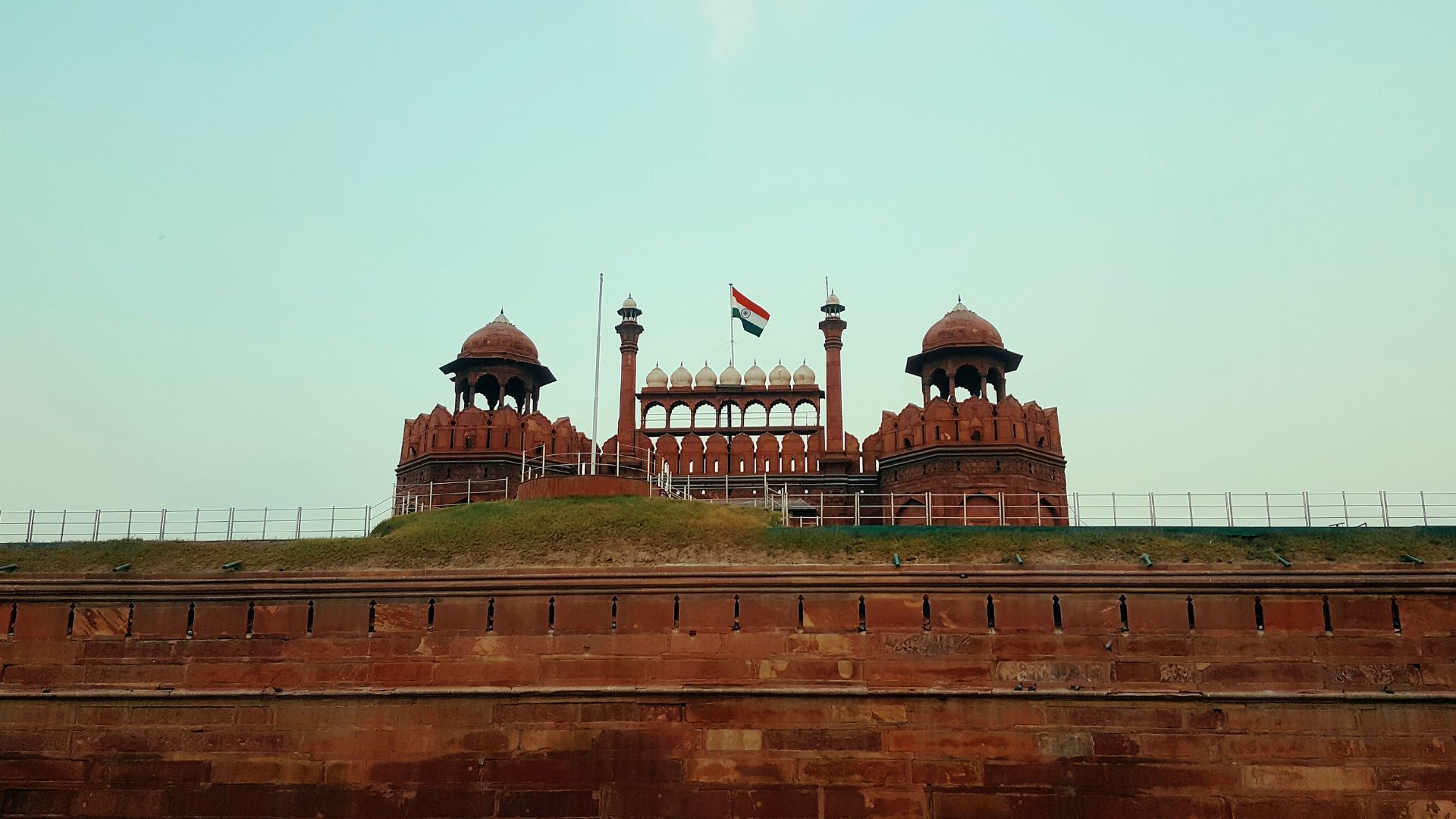
Also called Lal Qila, Red Fort was constructed by Shah Jahan in 1638 AD. A UNESCO World Heritage Site, the place stands tall in Old Delhi and is one of the most popular tourist spots in the city.
It is built with red sandstone and has massive walls that are around 75 feet (23 metres) in height. Inside, you can see a beautiful complex of palaces, entertainment halls, balconies, fountains, indoor canals and gardens. The premises also house an ornate mosque.
It takes around two hours for a complete tour of the Red Fort and is a delight for lovers of history and Mughal architecture. You can also visit the in-house restaurant, Café Delhi Heights, in case you want to take a break and get some refreshments.
How to reach: The closest metro stations are Lal Quila (violet line) and Chandni Chowk (yellow line). You can either walk from here or take a rickshaw.
Time: 9:30 am to 4:30 pm (Monday closed)
Entry Fee: INR 35 for Indians, INR 500 for foreigners
Book your stay at Haveli Dharampura on Booking.com here
Book your stay at Haveli Dharampura on Agoda.com here
Salimgarh Fort
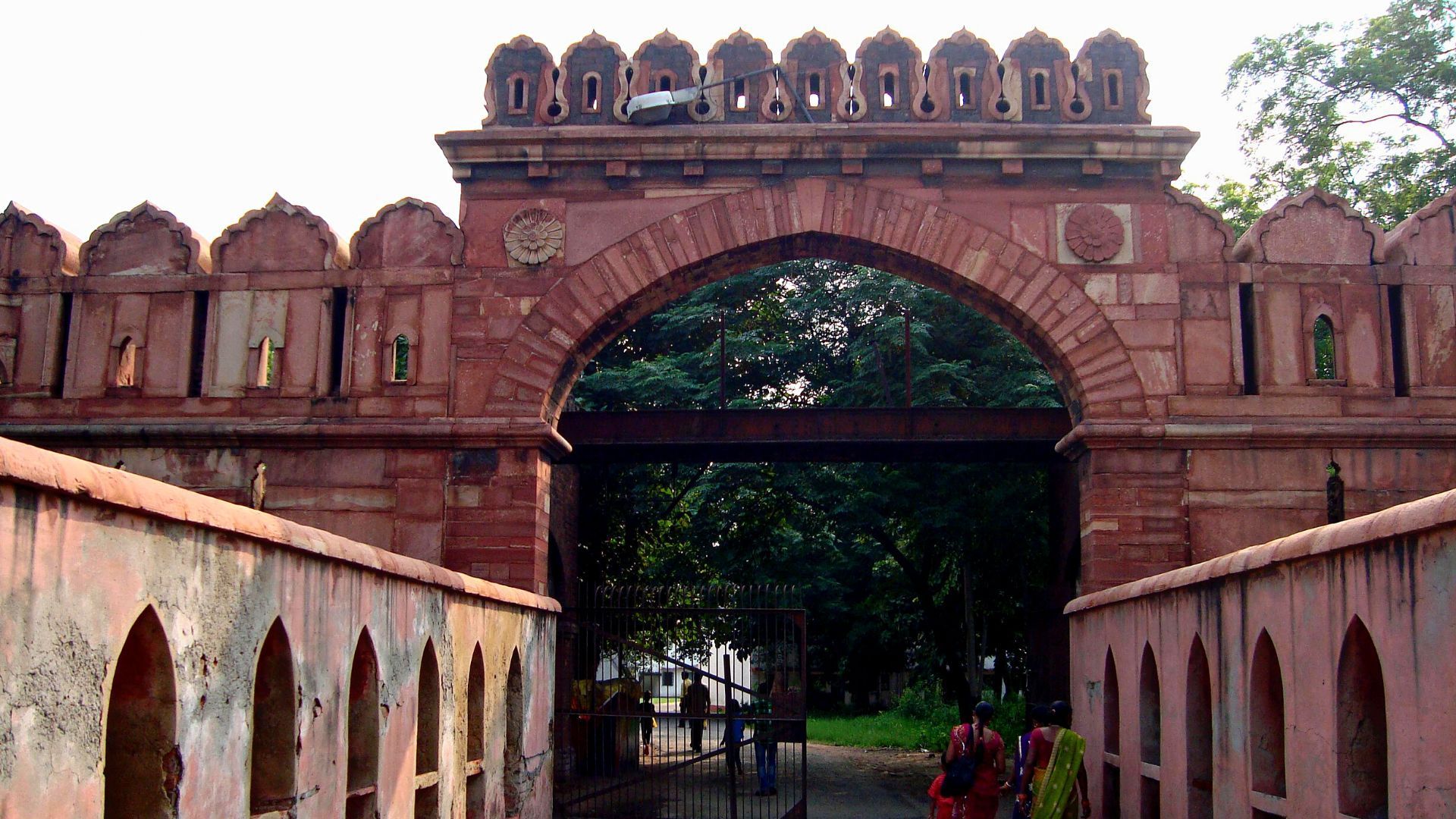
Located next to Red Fort, Salimgarh Fort dates back to 1546 AD and was built by Salim Shah Suri. When the Red Fort was under construction, the Mughals used this fort in Delhi for short stays. Aurangzeb converted it into a prison during his reign. However, under British rule, the structure was used as an army camp.
The triangular fort has thick walls made with rubble masonry and several bastions that served as places where sentinels kept a watch. A bridge connects it to the Red Fort, and even though in ruins, the fort offers magnificent views of the Yamuna River.
How to reach: The nearest metro stations are Lal Qila (violet line) and Chandni Chowk (yellow line).
Time: 10:00 am to 5:00 pm (Monday closed)
Entry Fee: Nil, as it is part of the Red Fort complex
Purana Qila

Purana Qila (or Old Fort) is located on New Delhi’s Mathura Road. It is also known as Shergarh, named after Mughal emperor Sher Shah Suri, who began its construction. Recent excavations have unearthed materials dating back to the pre-Mauryan era (2,500 years back).
Legend has it that the fort was built at the site of Indraprastha, from the Mahabharata in the 3rd Century BCE, and later, its renovation was undertaken by Sher Shah Suri and Humayun. The fort has three gateways – Bara Darwaza, Humayun Gate and Talaqi Gate. These double-storeyed structures have huge, semi-circular bastions flanking on either side. These are decorated with blue and white marble sheets, adding to the overall aesthetic appeal.
The fort is spread over 1.5 kilometres of land. The Indo-Islamic style of construction is definitely a sight to behold, and the legends associated with it are sure to intrigue the history buff in you.
How to reach: The nearest metro station is Supreme Court (blue line). From there, you can either walk or take an autorickshaw to the fort.
Time: 7:00 am to 5:00 pm (all days)
Entry Fee: INR 20 for Indians, INR 250 for foreigners
Book your stay at The Oberoi New Delhi on Booking.com here
Book your stay at The Oberoi New Delhi on Agoda.com here
Tughlaqabad Fort

Tughlaqabad Fort was built by Ghiyasuddin Tughlaq in 1321 AD and is believed to have been his dream even before he became a ruler. The fort features an Islamic style of architecture and has detailed carvings on the walls and domes. The 13 entry gates are also embellished with intricate designs.
The fort has many stories around it and is said to be haunted (though nothing is proven) – just another reason that it is worth a visit for lovers of the supernatural. You will need at least a couple of hours to explore this fort and it makes for a great spot to visit with friends and family or even alone.
How to reach: Govindpuri (violet line) is the nearest metro station. From here, taking an autorickshaw would be the best option to reach the fort.
Time: 7:00 am to 5:00 pm
Entry Fee: INR 5 for Indians, INR 100 for foreigners
Lal Kot and Qila Rai Pithora
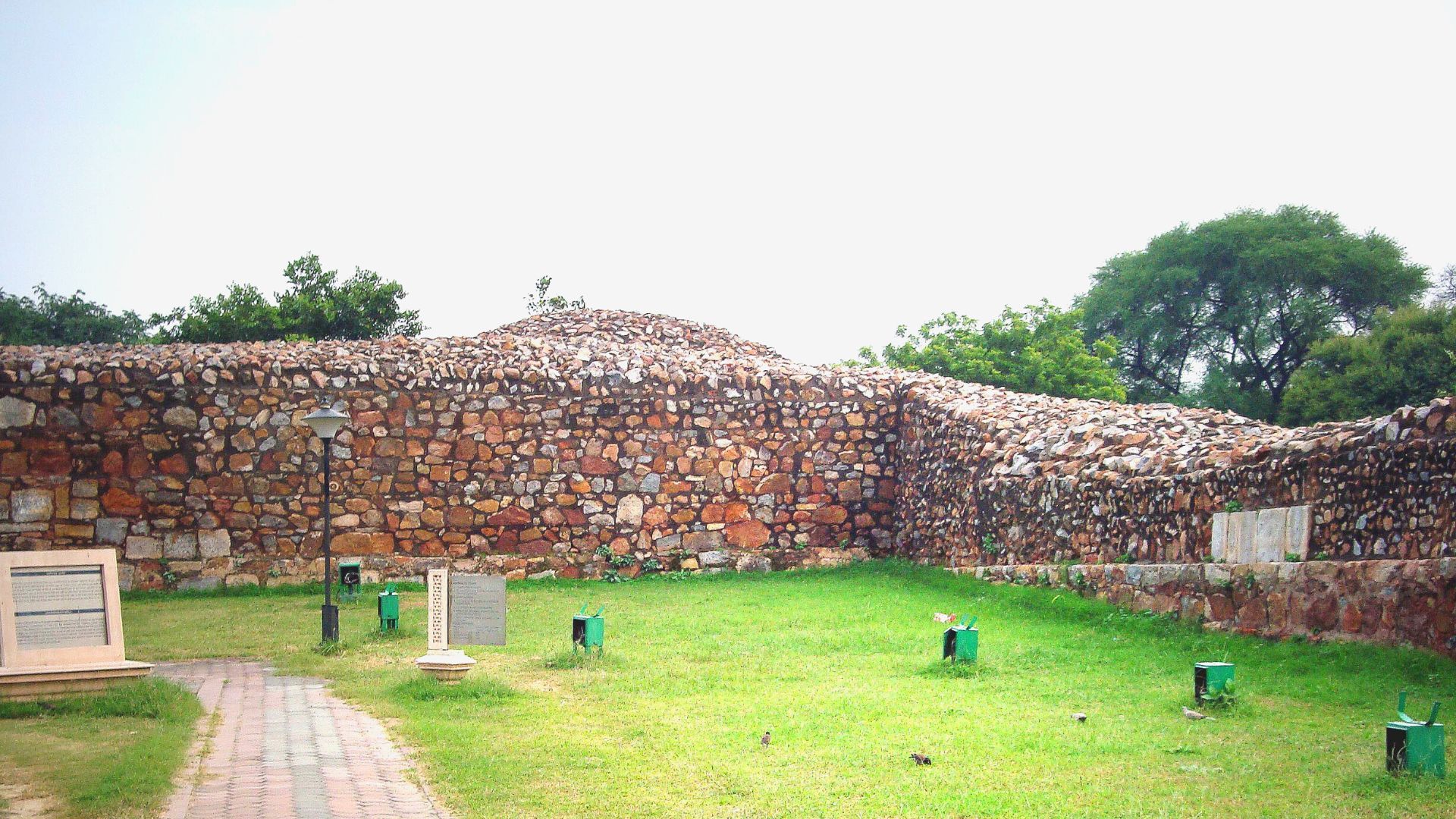
Qila Rai Pithora was constructed by the eminent Chauhan ruler, Prithviraj Chauhan, in the 12th Century AD. Chauhan emperors won the Qila, which has Persian origins, from Tomar Rajputs. The fort is an extension of Lal Kot, which is known to be Delhi’s first red fort constructed by the Tomar ruler Anangpal I. Its walls are spread across Mehrauli, Vasant Kunj and Saket.
Qila Rai Pithora is a major tourist attraction owing to its mixed history and architecture. Lal Kot is the citadel of the larger Qila, which has several gates and other structures within it. The fort is located close to the Qutub Complex and is believed to be a symbol of power, greed, battles and disputes.
It is a must-visit if you want to learn more about Delhi’s non-Mughal history.
How to reach: The nearest metro station is Qutub Minar (yellow line). From here, you can walk or hop onto an e-rickshaw to reach the fort.
Time: 7:00 am to 7:00 pm
Entry Fee: Nil
Siri Fort

Siri Fort was built by Afghan ruler Alauddin Khilji to defend his seat from the Mongols. Khilji named his capital Siri, which is how the fort got its name.
The place was built between 1297 and 1307 AD and resembles the structures of massive Turkish forts. Along with his capital and the citadel, Khilji also built a water reservoir close by, which is present even today. Called Hauz Khas, the area now consists of an Islamic seminary, mosques, tombs, a village (Hauz Khas Village, known for its upscale boutiques and cafes) and manicured lawns surrounding the reservoir.
Though this fort in Delhi lies in ruins, it houses a modern sports complex and auditorium, with world-class facilities for sports such as tennis, cricket, basketball and a gymnasium.
How to reach: The nearest metro stations are Hauz Khas (yellow line and magenta line) and Green Park (yellow line). You can take an autorickshaw from here.
Time: 9:00 am to 5:00 pm
Entry Fee: Nil
Book your stay at The Lodhi New Delhi on Booking.com here
Book your stay at The Lodhi New Delhi on Agoda.com here
Feroz Shah Kotla Fort
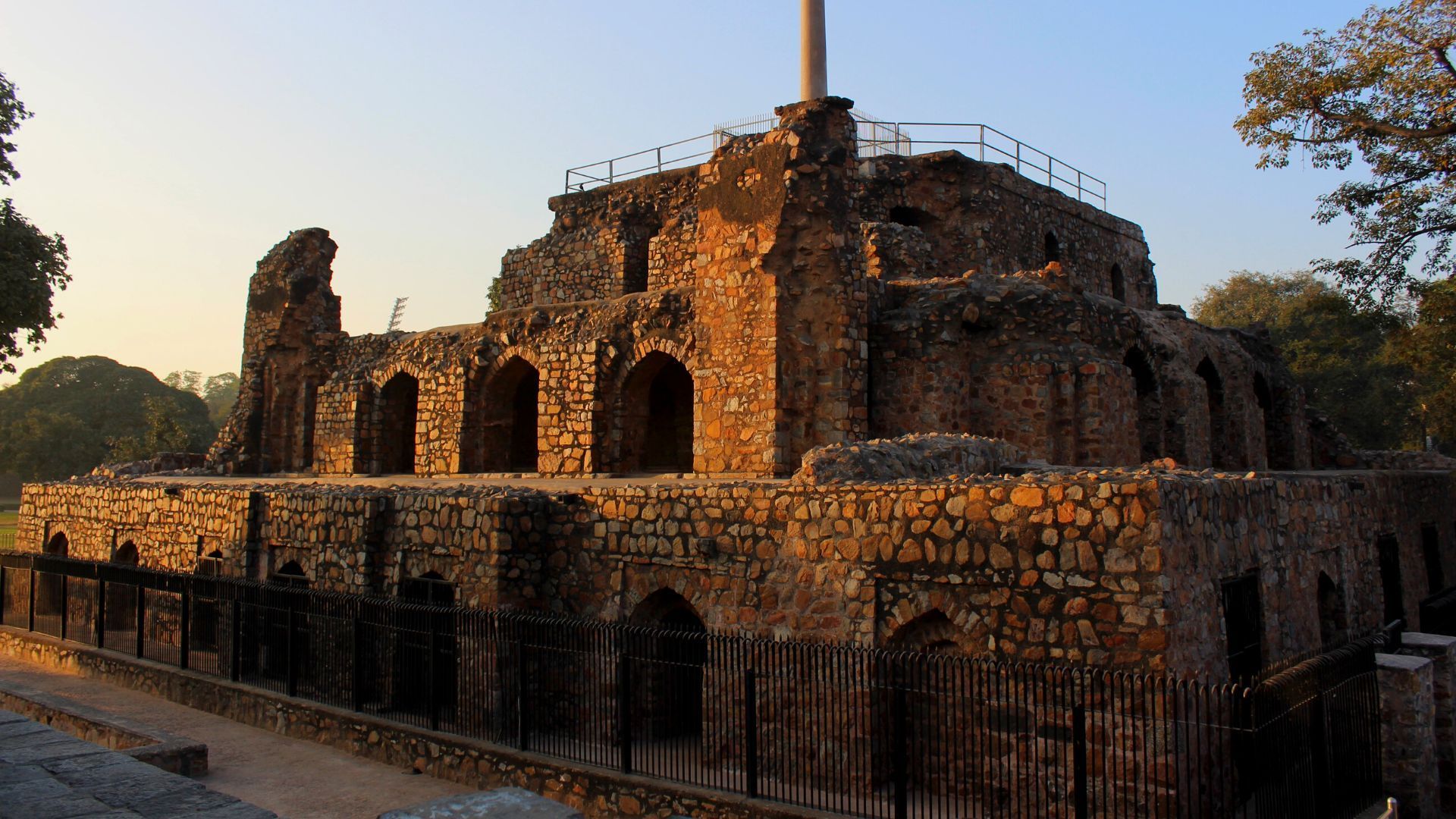
Feroz Shah Kotla Fort will give you a glimpse of Firozabad, which is among the eight cities of Delhi. The place, which also lies in ruins, was built by Feroz Shah Tughlaq, a ruler of the Tughlaq dynasty, in 1354 AD. The half-broken walls are sure to take you to a different era, and its polished sandstone pillars and detailed carvings may make you want to learn more about the architectural style back then.
These pillars have several inscriptions, some of them in the Brahmi script. The fort complex also houses the Jami Masjid and well-maintained lawns.
How to reach: Delhi Gate (violet line) is the closest metro station to the fort. From here, you can walk or hire an e-rickshaw.
Time: 8:30 am to 7:00 pm
Entry Fee: INR 20 for Indians, INR 250 for foreigners
Adilabad Fort
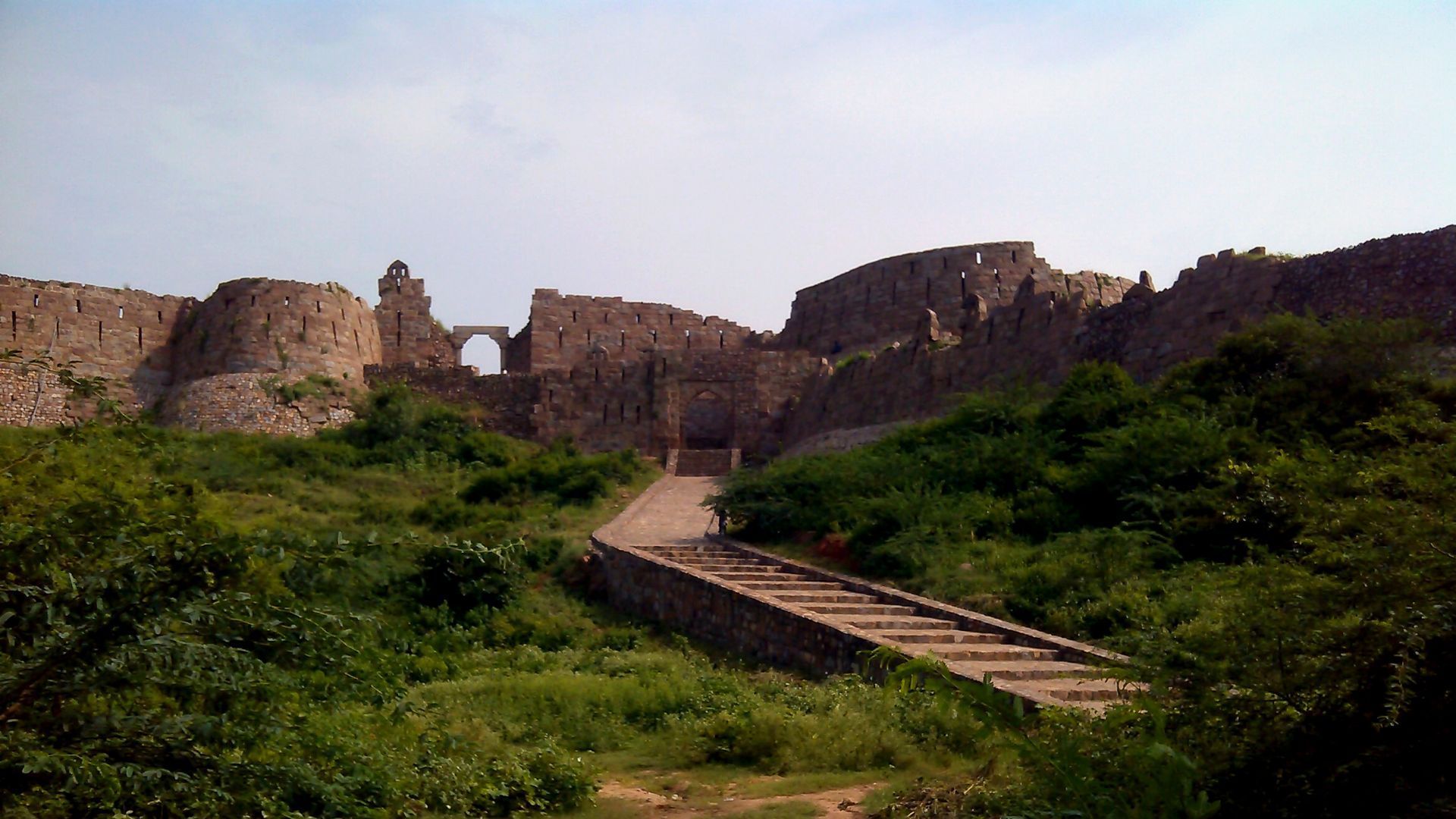
Located next to Tughlaqabad Fort, Adilabad Fort is a mirror image of its neighbour. It was built by Muhammad bin Tughlaq, Ghiyasuddin Tughlaq’s son, in 1326 AD.
The fort stands tall on a hillock and is protected by the Archeological Survey of India (ASI). Located on a slight incline, the fort is a bit difficult to walk through but makes for a great place to spend a few hours in solitude.
How to reach: The nearest metro station is Govindpuri (violet line).
Hero Image credit: Kanchan Gupta/Unsplash; Featured Image credit: Barun Ghosh/Unsplash
This story first appeared on Travel+Leisure Asia.

